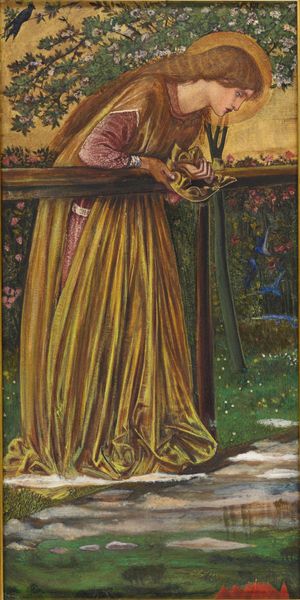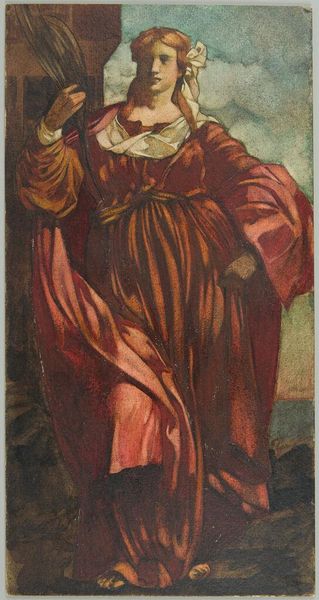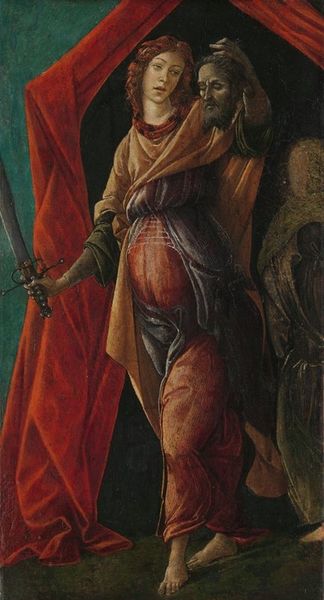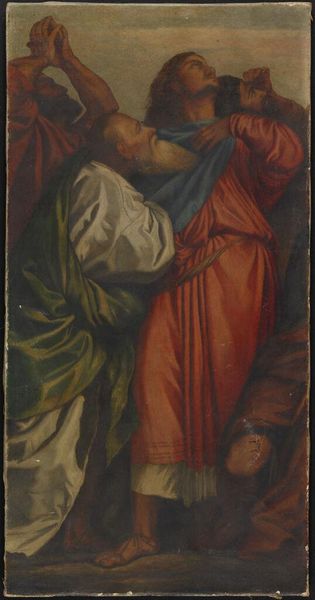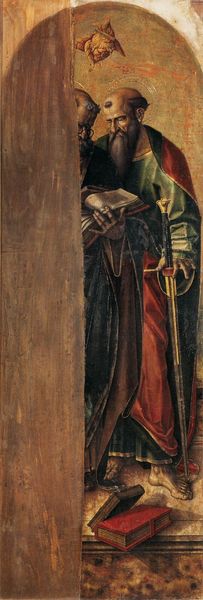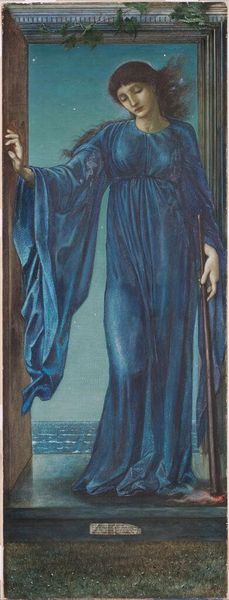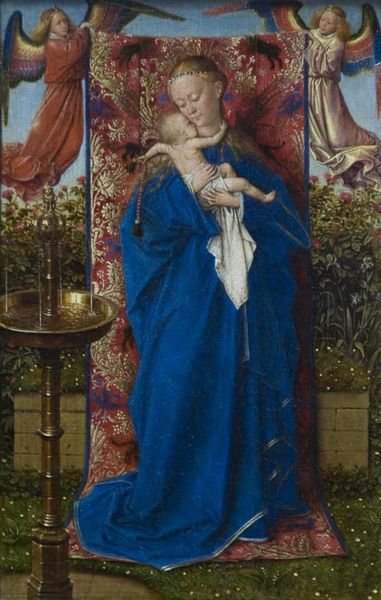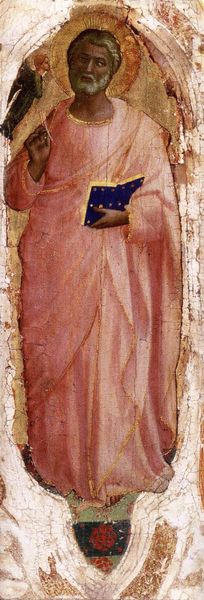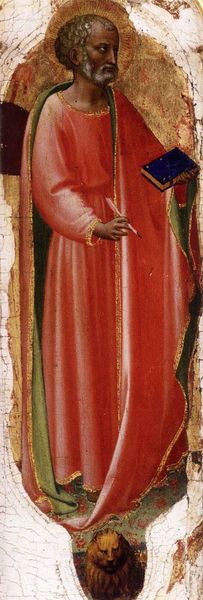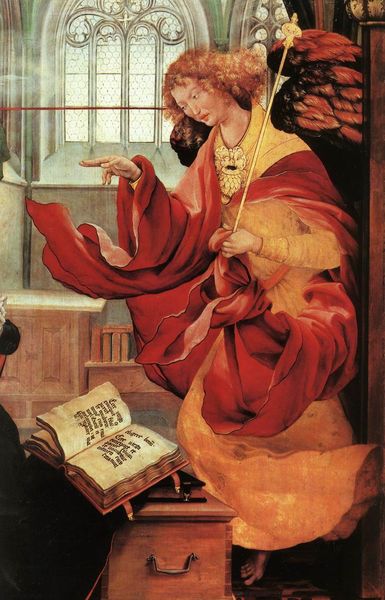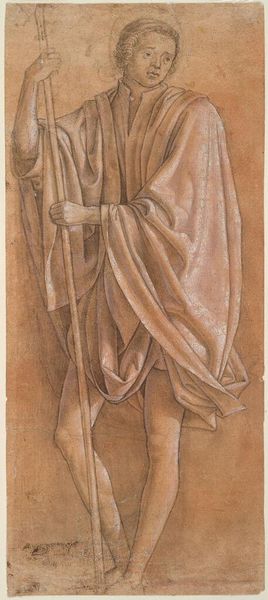
The Four Apostles, left panel - St. John and St Peter 1526
0:00
0:00
panel, oil-paint
#
portrait
#
panel
#
oil-paint
#
figuration
#
oil painting
#
portrait reference
#
history-painting
#
northern-renaissance
#
realism
Copyright: Public domain
Editor: This is the left panel of Albrecht Dürer's *The Four Apostles*, painted in 1526. It depicts Saint John and Saint Peter. I’m really struck by the contrast between the youthful, almost contemplative John and the more stern, weathered Peter. What stands out to you? Curator: What resonates with me is how Dürer positions these figures within the tumultuous religious climate of the Reformation. Notice how John, representing the Evangelists, stands in the foreground, seemingly blocking Peter, the first Pope, from full view. Do you think this could be Dürer's statement on the authority of scripture over papal decree? Editor: That’s a really interesting point! I hadn't considered it that way. It's like Dürer is subtly using visual composition to engage in the religious debates of his time. The focus on John with his writings underscores that. Curator: Precisely! Dürer was deeply sympathetic to Martin Luther’s ideas, and I believe this painting acts as a visual manifesto. Consider the historical context: The Reformation was challenging traditional power structures, and this artwork participates in that challenge. What does it say to you about the role of art during periods of significant social change? Editor: It shows that art isn’t just decorative. It’s a form of commentary. Artists like Dürer could use their skills to take a stand on complex issues. This wasn't just about painting religious figures; it was about engaging with the very foundations of belief. Curator: Exactly! And consider, too, that these figures aren't just religious icons, they are embodiments of certain ideological positions. How might these depictions reinforce or challenge prevailing ideas about masculinity and leadership within that context? Editor: It reframes them, giving greater importance to direct, textual engagement rather than established hierarchical power. Thanks! Thinking about this painting within its historical and social context makes it much more powerful. Curator: Absolutely! By examining art through an activist lens, we unearth these powerful dialogues and better understand how it continues to shape our perceptions.
Comments
No comments
Be the first to comment and join the conversation on the ultimate creative platform.

